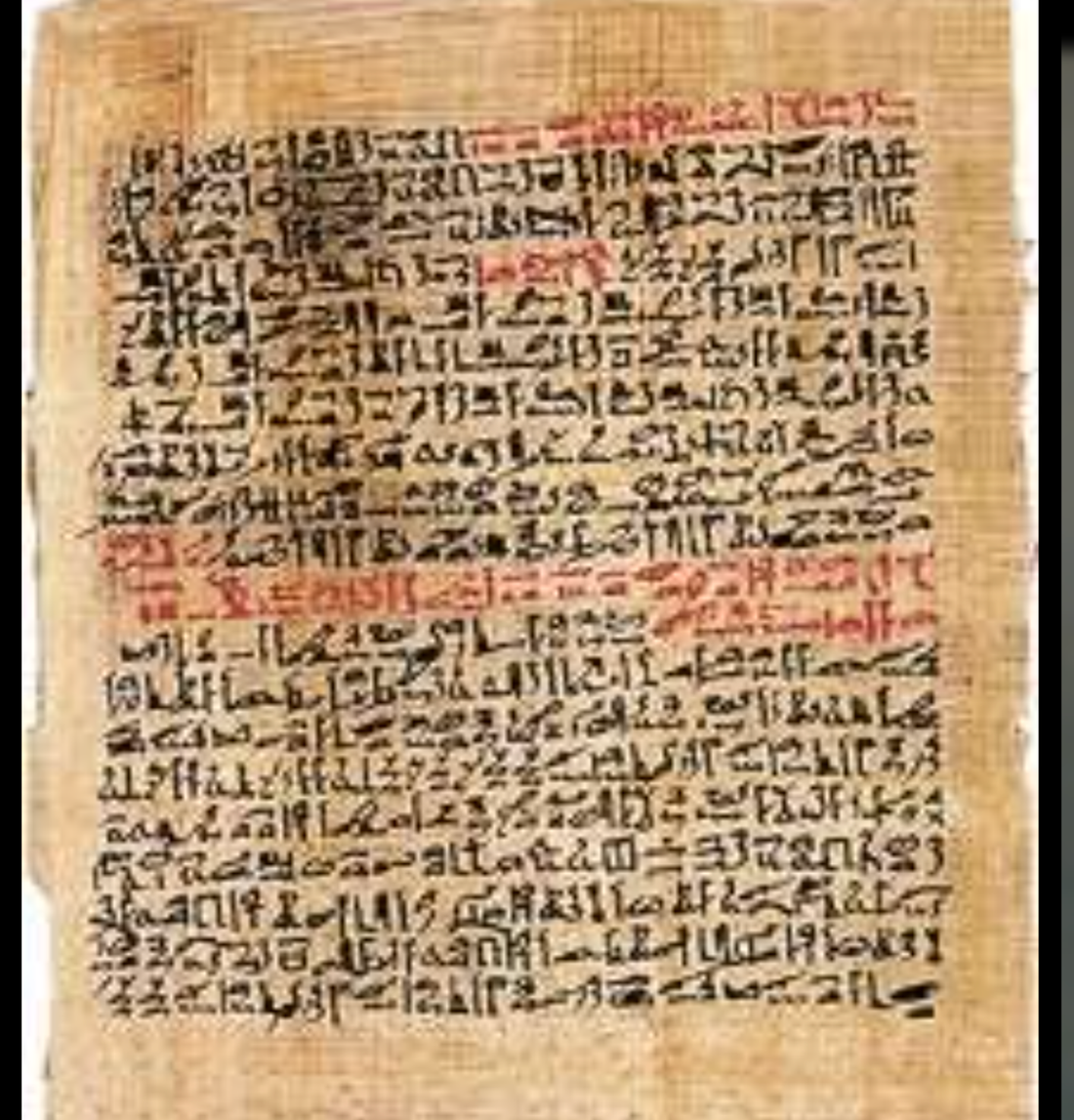
The Sweet Secrets of Beeswax in Traditional Skincare and Medicine
Share
Beeswax has a long history in traditional medicine, skincare practices, and even oral care.
For thousands of years, people have harnessed the powers of this golden ingredient and for good reason. Beeswax has wonderful skin protective and soothing properties. Here are just some ways that beeswax has been used through history
ANCIENT EGYPT
Historians have found containers with remnants of a beeswax like substance in them in ancient Egyptian tombs. Tools associated with the preparation and application of ointments and creams have been found as well. There's a medical text from around 1550 BCE called Ebers Papyrus (pictured) which mentions various substances from the beehive and their use in skin and wound healing. Ebers Papyrus also tells us that ancient Egyptians used honey on their skin and various oils.
Ancient Egyptian wall paintings and reliefs often depict scenes of people applying cosmetics and perfumes. These images sometimes show the use of ointments and salves, which were likely made with beeswax as a base ingredient. Skincare was very important in ancient Egyptian culture
We don't actually know for sure what Cleopatra used on her skin, however the internet tells us that she loved beeswax and honey on her skin and she probably did. We started making our Bee Balm because we learned about Cleopatras love for honey and beeswax on her skin.
Beeswax has such beneficial properties for the skin. It is emollient, forming a protective barrier on the skin's surface while retaining moisture. It also has antimicrobial properties, helping to prevent bacterial growth. These qualities make beeswax a logical choice for skincare in an era when natural ingredients were the primary resource for cosmetic products.
ANCIENT GREECE
The De Materia Medica Written by the Greek physician Dioscorides in the 1st century CE, was an influential herbal medicine text that discusses the properties and uses of various medicinal substances. It mentions beeswax as an ingredient in skincare preparations, such as ointments and creams.
Beeswax was very important in ancient Greece. It was commonly used for sealing, waterproofing, and preserving various materials, including wood, leather, and parchment. Beeswax was also used in the production of candles, as an ingredient in medicinal remedies, and for other practical purposes. Honey was highly valued in ancient Greek society and had various uses in cooking, medicine and skincare
ANCIENT ROME
Pliny the Elder's Naturalis Historia: This Roman encyclopedic work, written in the 1st century CE, covers a wide range of topics, including natural history, medicine, and skincare. Pliny the Elder mentions the use of beeswax in skincare preparations, such as facial masks and ointments.
ANCIENT INDIA
Ancient Ayurvedic texts, including the Charaka Samhita and Sushruta Samhita, mention the use of beeswax in traditional Indian medicine. These texts discuss its properties and use in skincare preparations and various medicinal formulations.
In Ayurveda, beeswax is known as "Madhu" and is considered a valuable ingredient in various skincare preparations. It is believed to possess nourishing, moisturizing, and protective properties for the skin. Beeswax acts as a natural emollient, helping to retain moisture and soften the skin. It forms a protective barrier on the skin's surface, shielding it from environmental aggressors and preventing moisture loss.
In Ayurvedic skincare formulations, beeswax is often combined with other natural ingredients such as herbal extracts, oils, and essential oils. These combinations can create creams, balms, and ointments used for moisturizing, soothing irritated skin, and promoting overall skin health.
ANCIENT CHINA
Historical records and texts from ancient China often mention the use of beeswax in medicine and cosmetics, These documents provide valuable insights into the medicinal and skincare practices of that time.
Archaeological discoveries also contribute to our understanding of ancient Chinese medicine and cosmetics. Excavations of ancient tombs, dwellings, and other sites have unearthed artifacts such as containers, utensils, and cosmetic tools that provide evidence of the materials and ingredients used in skincare and medicinal preparations. Beeswax residue on these artifacts can be analyzed to confirm its presence and use.
Also, traditional Chinese medicine texts, such as the "Shennong Ben Cao Jing" (Divine Farmer's Materia Medica), a famous ancient herbal manual, often include descriptions of the therapeutic properties and uses of various natural substances, including beeswax.
Throughout history, beeswax has been a key component in the creation of balms, salves, and oral remedies used to promote oral health. Ancient civilizations recognized the antimicrobial and soothing properties of beeswax and combined it with other natural ingredients to create mouth rinses, tooth powders, and even chewing gums. Beeswax was believed to help freshen breath, strengthen gums, and support overall oral hygiene.
In ancient cultures, beeswax was also used to create custom mouthguards for various purposes, including teeth grinding and sports activities. By heating and molding beeswax, individuals could create a comfortable and protective barrier for their teeth. This tradition continues today, with modern mouthguards sometimes incorporating beeswax as a moldable component.
Skincare and oral care rituals steeped in tradition often involved unique techniques incorporating beeswax. For example, in Ayurvedic medicine, oil pulling—swishing oil in the mouth—has been practiced for centuries. Some traditional oil pulling recipes included beeswax-infused oils to enhance the cleansing and protective properties of this oral care technique.
In today's modern world, we continue to draw inspiration from these ancient traditions. Beeswax's natural properties, including its antimicrobial and protective qualities, make it a sought-after ingredient in natural oral care products. From beeswax-infused mouthwashes and toothpaste to natural chewing gums, the legacy of beeswax in oral medicine lives on, blending the wisdom of the past with the needs of the present.
ready to try a beeswax balm on your skin? they make beautiful moisturisers for face, hands and body, Take a look at our bestselling bee balm and tap into this ancient skincare secret for yourself
